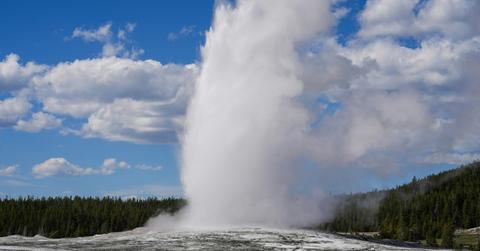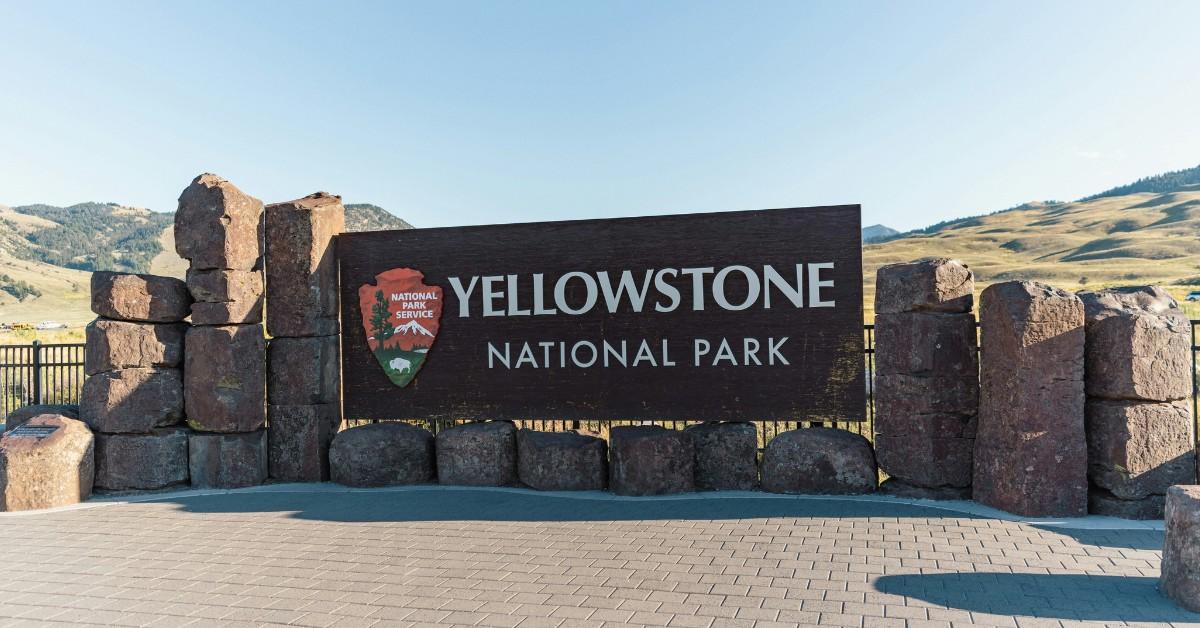If Yellowstone Erupts, This Is How It Could Change the World
Yellowstone hasn't erupted in thousands of years.
Published July 14 2025, 4:21 p.m. ET

Yellowstone National Park is home to scenic mountain ranges, majestic geysers, and a sleeping giant known as a supervolcano. A supervolcano is the name given to these types of volcanoes that have a center that is capable of a magnitude eight eruption, according to the Volcano Explosivity Index.
While Yellowstone isn't the only supervolcano — there are other ones located in New Zealand, Indonesia, and other places — it gets a lot of attention thanks to its size and location.
What happens if Yellowstone erupts? See what the experts predict could happen, not only in the area surrounding Yellowstone, but around the world as well.

What happens if Yellowstone erupts?
According to the U.S. Geological Survey (USGS), if Yellowstone were to erupt, the aftereffects would be felt around the world. To start, the areas immediately surrounding Yellowstone would experience pyroclastic flows. Pyroclastic flows are the name used to describe the lava that erupts out of a volcano, and they include a high-density mix of volcanic gas, ash, pumice, and hot lava blocks.
These flows are fast-moving, and they will quickly come down the slopes of a volcano.
These flows can contain two parts, including the lower flow of the hot lava that will move at ground level, and then a cloud of ash that will follow above the lava level. These pyroclastic flows will destroy everything they touch, and an eruption of Yellowstone would send them into Wyoming, Idaho, and Montana.
Areas that are further away from Yellowstone would escape the flows, but they would be subject to falling ash, which would come down heavily in the states closest to the epicenter.
The ash would be especially dangerous for anyone who breathes it in, and it could kill those in the hardest hit areas immediately. The weight of the ash would also pose a significant threat, and it would smother crops and collapse buildings as it piles up.
The BBC says that the ash would reach Europe within three to four days of the eruption, and it would likely only see a dusting of the powder.
After that, it would only take around two to three weeks before cooler temperatures set in around the globe, thanks to the sulphur gas injected into the upper atmosphere from the eruption. Scientists predict that global temperatures will drop by up to 10 degrees, with the Northern Hemisphere seeing a 12-degree drop.
These effects could last for six to 10 years, putting an end to Monsoons, which could cause widespread famine in Asia.
Is Yellowstone going to erupt?
Scared? Don't be. The good news is that scientists don't believe that the sleeping giant under Yellowstone National Park will wake up in our lifetime. According to LiveScience, experts say the next Yellowstone eruption likely won't happen for hundreds of thousands of years.
And even then, it may not be that bad, according to research published in the journal Nature, because experts have discovered that the magma lurking within Yellowstone is actually split up amongst four different chambers.
Not only that, but some of the reservoirs of magma are likely to cool down and solidify, lessening the chances of an eruption. While an eruption does sound like it would change the landscape of the world, it sounds very unlikely to happen anytime soon.